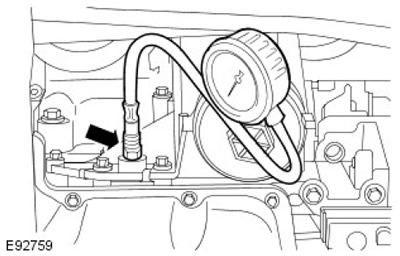For information on specific areas of the engine, refer to the general procedures in this section and the appropriate section of the manual.
Inspection and verification
1. Check the customer's complaint.
2. Visually inspect for obvious signs of mechanical or electrical damage.
Visual check
|
Mechanical elements |
electrical equipment |
|
• Engine oil level • Coolant level • Transmission fluid level • Fuel level • Coolant leaks • Oil leaks • Fuel leaks • Visibly damaged or worn components • Loose or missing nuts or bolts • Fuel contamination/fuel brand/fuel quality • Attachment / condition of the sensor • Viscous fan coupling and solenoid valve • Laying of piping system, etc. to avoid vibration • Contact between driveline and chassis |
• Fuses • Wiring harness • Electrical plug (s) • Nozzles • Glow plugs • Sensor power supply 5 V • Sensor (And) • Viscous fan solenoid valve • The engine control unit (ECM) |
3. If there is an obvious reason for the problem you identified or described by the client, eliminate it before proceeding to further actions (if possible).
4. Before Referring to the Symptom Table or DTC Index (DTC) read all DTCs with a validated diagnostic system or scan tool.
Oil pressure check
NOTE: Perform a 10 km road test before checking the engine oil pressure. Do not attempt to reach normal operating temperature by letting the engine idle
1.
Warnings:
- During this procedure, hot engine oil will inevitably be spilled, so appropriate precautions must be taken to avoid scalding. Failure to follow this instruction may result in injury.
- Use protective gloves.
Remove the oil pressure sensor.
For more information refer to: Engine Oil Pressure Sensor (EOP) (303-14 Electronic controls - Diesel engine ID4 2.4L, Removal and installation).
2. Install the oil pressure sensor and connect its connector.

3. Check the engine oil level, top up if necessary.
4. Start the engine and let it run.
5. Record oil pressure readings at engine idle and at 2,000 rpm.
For more information, please refer to: Specifications (303-01 Engine - Diesel engine ID4 2.4L, Specifications).
6. Stop the engine.
7. Remove the special tool.
8. Install the oil pressure switch.
For more information refer to: Engine Oil Pressure Sensor (EOP) (303-14 Electronic controls - Diesel engine ID4 2.4L, Removal and installation).
9. Check the engine oil level, top up if necessary.
See section 100-00 for a complete list of DTCs that can be logged in the vehicle. For more information, see: How to use this manual (100-00 General information, Description and principle of operation).
Comments on this article